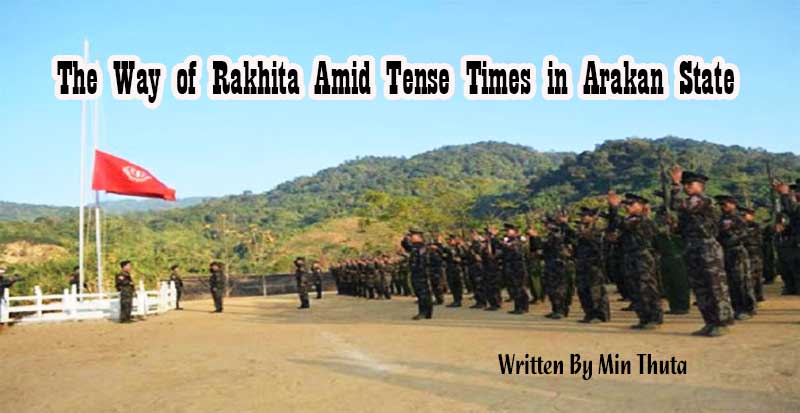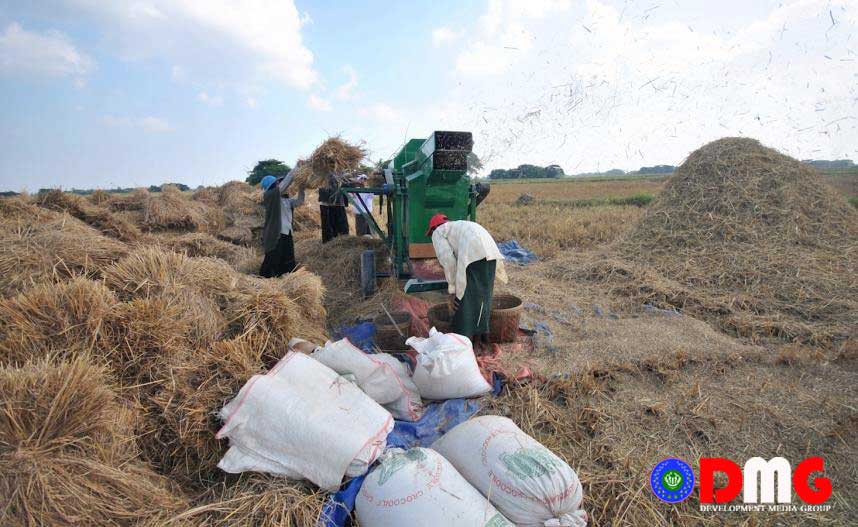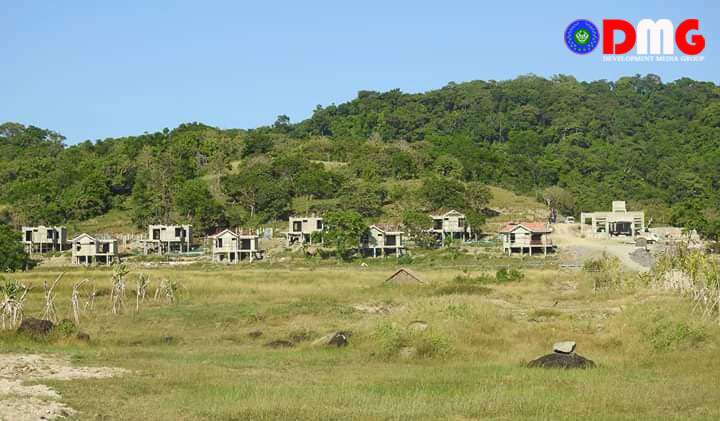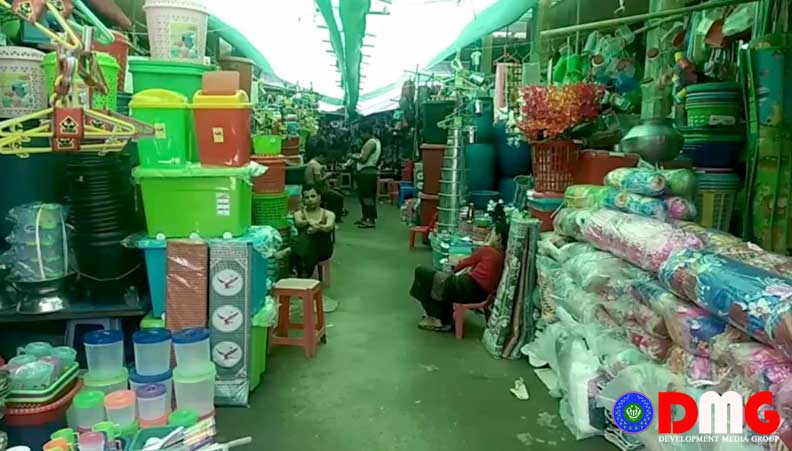- Junta unable to hold elections in dozens of wards and village-tracts in Sittwe, Kyaukphyu
- Fighting escalates between Myanmar military, Arakan Army in Ayeyarwady Region
- Regime steps up civilian arrests in Sittwe
- ULA safeguards Mrauk-U's ancient heritage
- Arakan on the Edge: What the DMG Landmine Impact Report Reveals About Myanmar's Deepening Humanitarian Crisis
The Way of Rakhita Amid Tense Times in Arakan State
With 25 percent of seats in Parliament guaranteed by the 2008 Constitution for the military, the military-proxy Union Solidarity and Development Party (USDP) will likely be able to form the government under a PR system. It is still too early, however, to tell if the regime will be able to hold the voting as it plans. More than one year after the coup, the regime still can’t control many towns in central Myanmar, not to mention the ethnic areas, which have been contested for decades.
24 Jul 2022

Written By Min Thuta
An unofficial ceasefire between the Arakan Army (AA) and Myanmar military has appeared on the brink of collapse in recent weeks, with military tensions running high for months in Arakan State and the regime lately exhibiting aggression toward the Arakanese people.
The military has been reinforcing its troops in Arakan State, and even brought in warships for a show-of-force series of naval exercises off the Arakan coast earlier this month. After its coup last year sparked a popular armed revolt, the military has been forced to fight resistance to its rule on multiple fronts; not only in ethnic areas on the country’s peripheries but also in central Myanmar.
Distracted by the numerous armed anti-regime groups fighting in many parts of the country, Myanmar’s military did little in the year after the coup to counter the Arakan Army’s rapid strides to consolidate its control in Arakan State. But more recently, the military has been heavy-handed in its response, arresting dozens of civilians, increasing travel restrictions and engaging in skirmishes with the Arakan Army on multiple occasions.
Arakan State has largely avoided the violence that has engulfed the rest of Myanmar since the 2021 coup. However, the regime has not dropped lawsuits against civilians who were unfairly detained over their alleged ties to the AA, even after it removed the Arakanese ethnic armed group from its list of terrorist organisations. It has also neglected the needs of Arakan State’s internally displaced people (IDPs), many of whom have been unable to return to their homes despite a cessation of military-AA hostilities, for the most part, more than 20 months ago.
The ceasefire between the Myanmar military and the Arakan Army was reached sometime around November 2020, but it is informal, and there is no concrete agreement between the two sides.
The AA did not attend the peace talks invited by junta leader Min Aung Hlaing in April, and has said it is taking a wait-and-see approach to a second round of talks that the junta is now pushing. Instead, the AA held virtual talks with the parallel National Unity Government (NUG) and made the meeting known to the public, which contributed to a sense of growing strain between the military and Arakan Army.
The regime has announced plans for a new election next year, in which it is widely expected to replace the first-past-the-post electoral system with proportional representation (PR) to further tighten its grip on power.
With 25 percent of seats in Parliament guaranteed by the 2008 Constitution for the military, the military-proxy Union Solidarity and Development Party (USDP) will likely be able to form the government under a PR system. It is still too early, however, to tell if the regime will be able to hold the voting as it plans. More than one year after the coup, the regime still can’t control many towns in central Myanmar, not to mention the ethnic areas, which have been contested for decades.
Civilians in Arakan State, who bore the brunt of the two years of fighting, have been thrown into a panic by the rising tensions between the Myanmar military and the Arakan Army. They know what a belligerent Myanmar military is capable of: Its troops committed grave human rights violations against Muslims in northern Maungdaw Township in 2017. It was guilty of similar atrocities against civilians, albeit on a smaller scale, during the 2018-2020 conflict.
The Arakan Army has increased its military and administrative presence in Arakan State since its conflict with the military first began in late 2018. Given that the Arakan Army enjoys widespread support among the Arakanese people, the Myanmar military is increasingly targeting the Arakanese people.
The leaders of the Arakan Army have declared that they will work for a confederation of Arakan State, which is a bitter political pill to swallow for the military council. I think the politics that the AA leaders want is far from the kind of outcomes that can be achieved through dialogue.
The military junta seems to have hoped that the Arakan Army would not join hands with the anti-regime groups known collectively as the People’s Defence Force (PDF). So the Arakan Army’s decision to establish ties with the NUG would have been quite an unwelcome shock to the junta.
If the fighting resumes in Arakan State, the Arakan Army is in a position to leverage the considerable influence it has built up in the region over the past few years.
For example, natural gas produced in Arakan State is estimated at US$1 billion a year and is bought by world power China. China, which has invested tens of billions of dollars in Arakan State, does not want an armed conflict in Arakan State. China already sees southern Arakan State as an economic engine, given that Chinese and Singaporeans have bought up hundreds of thousands of acres of land in Kyaukphyu Township.
If fighting erupts in Arakan State, China will not stand clearly on the side of either the Arakan Army or the Myanmar military, because hedging its bets is the most geostrategically prudent choice. If the Arakan Army can use this to its advantage, the military regime will be forced to exercise restraint in Arakan State or face the considerable disapproval of Myanmar’s giant northern neighbour.
We must anticipate that the Arakan issue is going less and less unnoticed by the regime with each passing day. Any renewal of large-scale conflict in Arakan State has the potential to change Myanmar’s politics and the balance of power between the junta and anti-regime forces.
This time, as the Arakan Army prepares for the possibility of hostilities once again, let us hope that the Way of Rakhita — described by the AA chief as “the struggle for national liberation and the restoration of Arakan’s sovereignty to the people of Arakan” — will keep us in good stead, come what may.




















